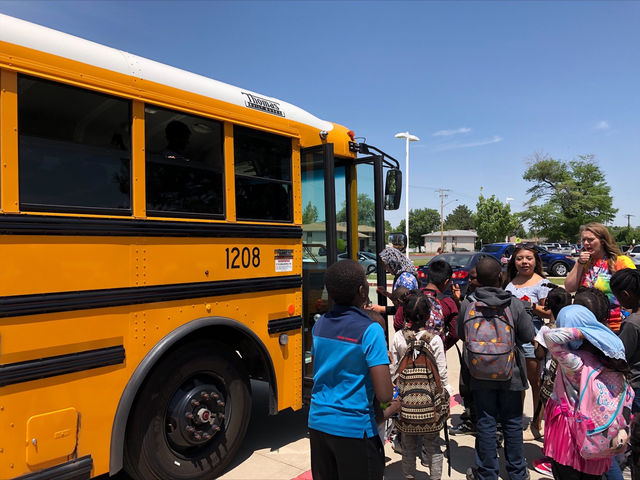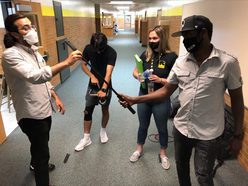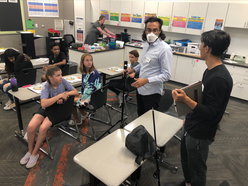
Amid the bustling energy of the middle school hallway, something stands out in the familiar scene. Branching out from one student’s backpack is a tall pole capturing every angle of the hallway with a 360-degree camera. The International Rescue Committee (IRC) in Salt Lake City’s education team partnered with Milad Mozari, an assistant professor with the University of Utah’s College of Architecture and Planning, to collaborate on a project for refugee and new American youth attending school in the United States for the first time. No longer the stuff of science fiction, virtual reality has become a tool that can show us the world and help build familiarity within new environments.
Krysti Nellermoe, education program supervisor at the IRC in Salt Lake City, met Milad during a volunteer project with students from Cottonwood High School in 2019. As an artist from Tehran, Milad wanted other students from refugee backgrounds to be exposed to unconventional career options and hosted a sound design workshop for their group.
Milad's immediate interest in volunteering with the IRC later led to a study with one of his university classes where they each designed a project to benefit those arriving in the U.S. Three former refugee youth who received services through the IRC gave feedback to the class as they designed their projects and relayed their own experiences in Utah schools. The project that leaped off the page was EJ Spencer’s virtual reality initiative designed to familiarize families with the Utah school system.

Once the project was decided upon, Milad and Krysti began connecting with local schools to record essential moments that every student experiences. Milad emphasized the team effort that has been the backbone of this project since its beginning. “I see myself as a facilitator, not an expert,” Milad clarifies, noting that he doesn’t want his enthusiasm for technology to be conflated with being a “tech savior.”
Two of the students offering feedback, Wesam Abdul and Mahmood, have continued to assist Milad with research while they attend Salt Lake Community College. “I like to lead from the back and not the front,” says Milad. “I’ve had my own exploration so why shouldn’t other people have that?”
With the help of Majde Ismail, digital inclusion intern, and Nassef Mohsen Ali, digital inclusion coordinator, the filming began. This included walking through busy hallways, which many refugee students reported as being overwhelming when they first started attending school in the U.S. They also filmed moments such as standing in line for lunch and riding on the bus. “Why not try to make the experience as close to [the real experience] as possible?” Krysti says.
“This project is also for the parents,” shares Caroline Jennings, who works on the IRC’s education team as the life skills & education access AmeriCorps VISTA. “It’s beyond helping students; it’s helping parents feel comfortable with school interaction. Showing them that they can ask for an interpreter, they have access to those resources.”

The virtual reality introduction to schools will be piloted with refugee families this fall, with hopes it will be incorporated as a permanent feature of cultural orientation, a series of classes attended by newly arrived families. To view the virtual reality videos, Milad and the education team decided to use cardboard VR headsets which could be used with phones. The design of the headsets will also include feedback from current IRC college & career readiness (CCR) students. “That way the [headset] tech is inexpensive and has the input of the CCR students,” Krysti explains. This provides both practical, hands-on experiences for students as well as prioritizes the insights of those with similar experiences to incoming students from refugee backgrounds.
“It’s a chance to expose [many] new arrivals to advanced technology,” Krysti explains, saying that a greater understanding of technology can increase one's autonomy to share their opinion. “If you have an idea of what's being said, you have inclusion in those conversations.”
Milad will continue to work alongside the IRC and CCR students as virtual reality begins to integrate into cultural orientation. “I like volunteering,” Milad said. “The angle I do it in unlocks agency and unlocks creativity in others. [It shows they’re] not confined to be what is expected of them. You have agency as you are in the world.”
Volunteers at the IRC in Salt Lake City come from a vast variety of backgrounds and enhance programming in unique ways. Learn more about current volunteer opportunities available by visiting Rescue.org/VolunteerSLC.
